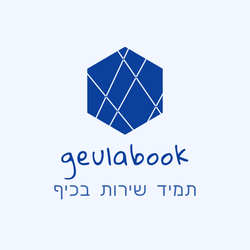Rabbi Yehuda ben Bezalel - Maharal of Prague - מהר''ל מפראג (Maharal fun Prague - יידיש) - rabbi and author, thinker and commentator; He was born around the year 1515 in Pozna, where his ancestors who came from the city of Warms settled at the end of the 15th century, and died in Prague in 1609. . He served as the father of the court and as head of yeshiva in the cities of Poznań in Poland, Niklešburg (Nikolsburg; today Mikulov) in Moravia and Prague in Bohemia (the latter two are part of the Bohemian Crown, and are located in today's Czech Republic). His teachings had a great influence on the Hasidic movement, which arose over one hundred and fifty years after his death, his books are considered a basis (Tefarat Yisrael, Netzah Yisrael) that provides a correct Torah perspective on the world of the Torah and the acquisition of faith. His book Nativot Olam opens a window to understanding the dimensions of the human soul. His special personality, in which the rabbi's hidden over the revealed served as fertile ground for stories and legends about his actions for the Jews of Prague, such as the one about the golem he created. The Maharal dealt a lot with educational matters. He warned about the educational systems of his generation. The children studied Chomash and Rashi, and from there they immediately moved on to studying Gemara and Tosaf. They didn't have time to understand the Talmud, and moved to quibbles and Torah innovations. He demanded to return to the study structure written in the Mishnah: five-year-old the Bible, ten-year-old the Mishnah, fifteen-year-old Talmud. Demanded to learn Hebrew and grammar. Even in the education of adults, he demanded first of all secondary education, and secondary societies were founded all over the Jewish world under his initiative. His student Rabbi Yom Tov Lipman Heller, who interpreted the mishna, writes that communities.
Good attitude towards Jews, similar to his father, Maximilian II. This, despite his Jesuit education. The Maharal's invitation to the emperor's court has been linked to many legends, and his student, Rabbi David Ganez, tells about it.
The Maharal's sons-in-law also do not specify and do not give the reason for the invitation. Possible reasons put forward by the researchers are a discussion of the situation of the Jews or alternatively due to the scientific ambitions of the emperor, who invited many scholars to him such as Tycho Brahe. It is also known that Johannes Kepler, one of the greatest astronomers in all At the time, he was in contact with the Maharal and discussed with him about his new discoveries.
Different types of human civilizations: a culture of power, importance and control (Babylon), a culture of materiality, a strong economy and sensuality (Persia), a culture of the power of wisdom and human reason (Greece), and a culture that includes all three elements together (Rome). And in front of them stands the people of Israel who express the "image of God" in man, which is a metaphysical and cosmological divine force. In the course of general history, humanity is marching, while discovering its powers, and this causes Israel to be lame and lame on its thigh as symbolized by Jacob. Only after the Fourth Kingdom will put its forces into action, will the people of Israel be able to re-establish themselves on the stage of history as a state and be replaced.
In Prof. Binyamin Gross explanation of the Haral, the nation of Israel is rooted in the world to remind the world of the presence of the photographer, whose basic ambition is to go beyond his nature and because of this he pushes the limits of human existence to the limit. According to Prof. Shalom Rosenberg in his interpretation of the Haral , the nation of Israel is an "alien nation" in the world, which is why it does not find a place in the natural world like the other natural nations and because of which it is persecuted by the nations, due to this difference, which is also the source of anti-Semitism.
He started publishing his books at a very late age. In 1578, at the age of 66, he published his first book, Gur Aryeh - a five-volume commentary on Rashi's commentary on the Torah, which goes far beyond that, and four years later he published his book Gevorot Ha'esh.
The most famous and famous books ever printed:
Gur Aryeh - גור אריה Commentary on Rashi Ahat (Prague 1578),
Gevorot Hashem - גבורות השם Commentary on the Passover Haggadah (Karaka 1582),
Derech Haim - דרך חיים Commentary on the Pirkei Avot (Karaka 1589),
Required for the Great Sabbath - דרוש לשבת הגדול (Prague 1589),
Ruling on Aguna - Psak al Aguna - פסק על עגונה (Prague 1594),
Netivot Olam - נתיבות עולם matters of morals and virtues (ibid. 1596),
Beer haGolah - באר הגולה The Exile's Well on Talmud Legends (ibid. 1598),
Netzah Israel - נצח ישראל on exile and redemption (ibid. 1599),
Tiferet Israel - תפארת ישראל The Glory of Israel on the virtue of the Torah (Venice 1599),
Ohr Hadash - אור חדש A new light on the virtue of the Torah (Prague 1600),
Ner mutzvah - נר מצווה - A mitzvah candle for Hanukkah
Interested in purchasing books and sets of Maharal and other commentators? Welcome to visit our store>>>geulabook

